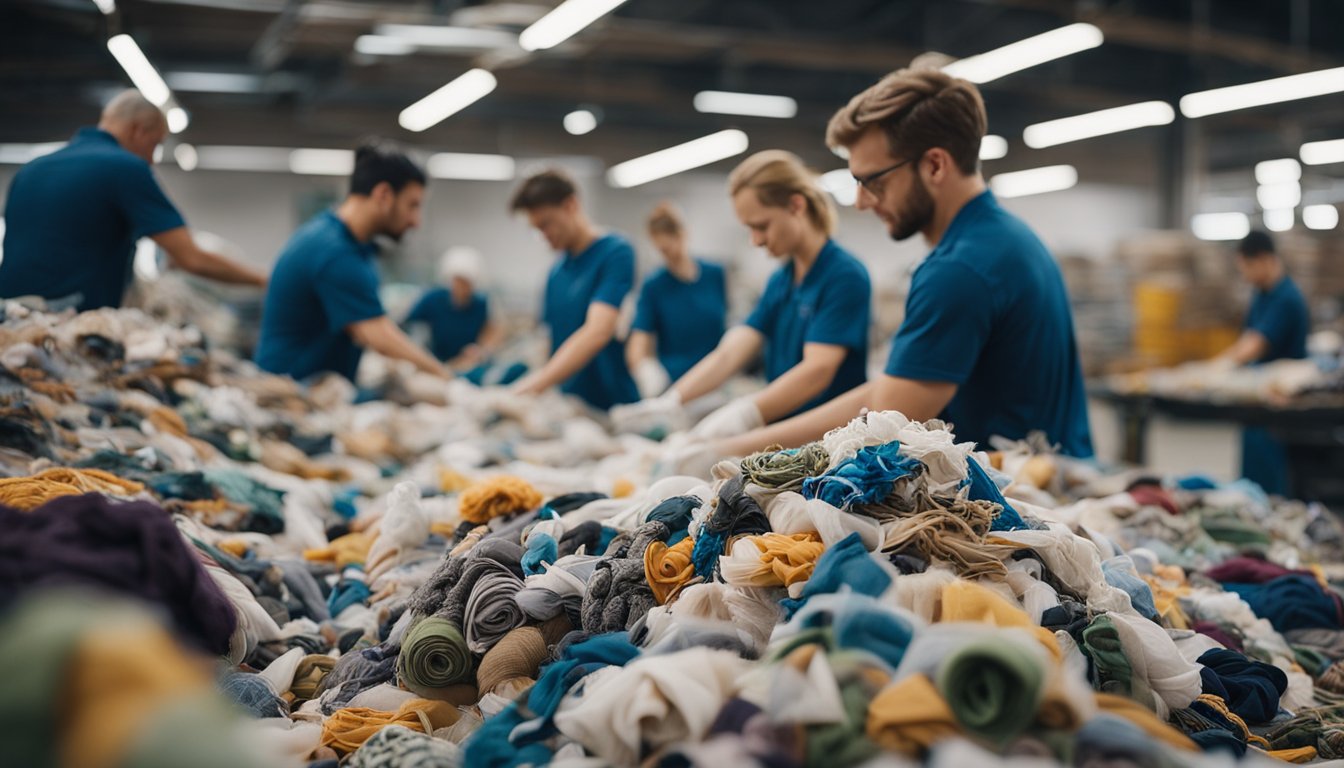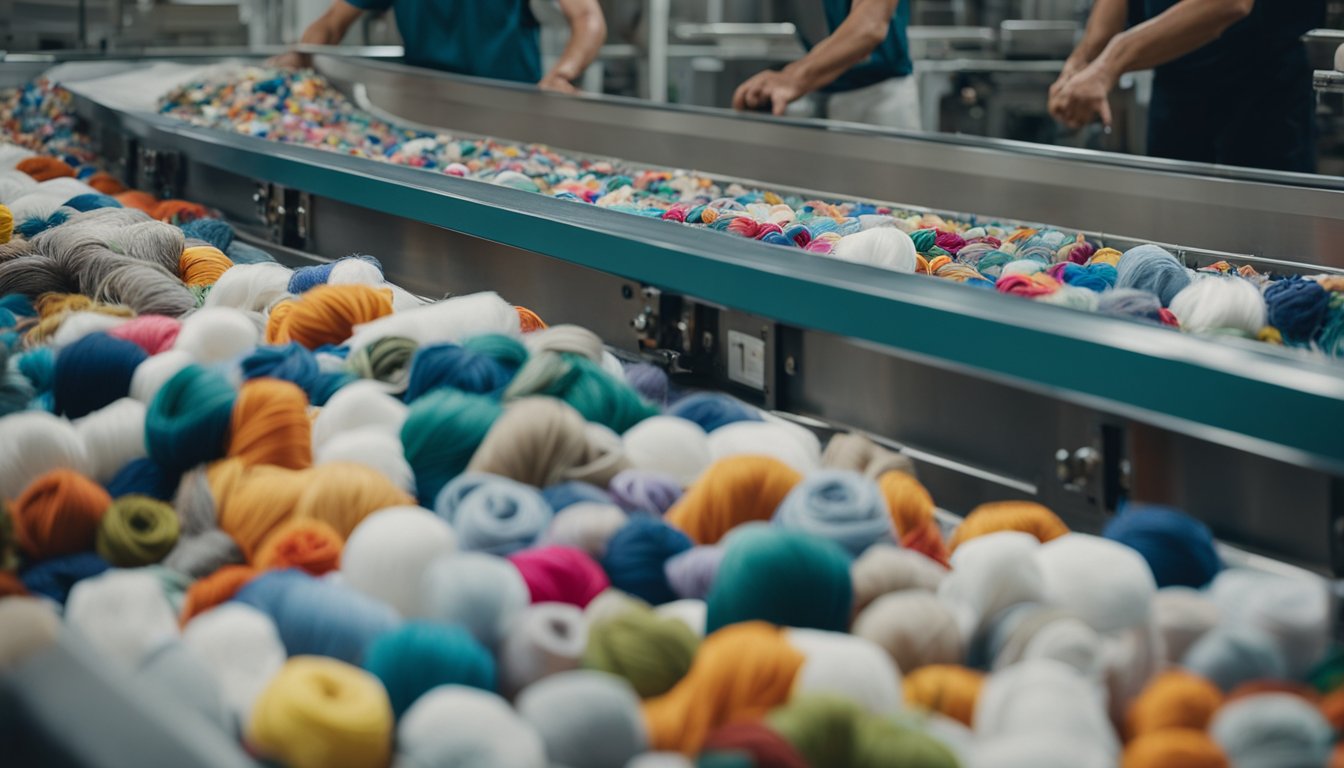Late updated: 11 Apr 2025 11:04
Written by: Sarah Hollister
Innovative Ideas For Reducing Textile Waste: Transforming the Fashion Industry
Reducing textile waste is a critical challenge for the fashion industry as well as our environment. One of the most promising solutions is innovation in fabric recycling and upcycling techniques, which transform discarded materials into new products and reduce the dependence on virgin resources. Cutting-edge technologies like advanced 3D knitting and waterless dyeing are making production more efficient and less resource-intensive. It's fascinating to see the industry's progress towards a circular economy.

Our focus must also include collaboration with local organisations and consumers. By promoting second-hand fashion, sample sales, and fabric donations, we can prevent valuable materials from ending up in landfills. These strategies help in extending the life of textiles, showcase the adaptability of the fashion world, and encourage consumers to think sustainably.
We understand that addressing textile waste involves a multi-faceted approach. Supporting research and implementation of innovative recycling technologies is vital in keeping waste out of our environment. These developments not only save resources but they also illuminate a path to a more sustainable future.
Key Takeaways
- Textile waste reduction relies on innovative recycling and upcycling.
- Local partnerships and consumer engagement are essential.
- Sustainable practices ensure a circular economy in fashion.
Understanding Textile Waste and Its Environmental Impact
Textile waste poses a significant threat to our environment, contributing to pollution and resource depletion. The repercussions of textile production, including CO₂ emissions and water pollution, highlight the urgent need to address these challenges.
The Global Issue of Textile Waste
Textile waste is a growing global concern, with millions of tonnes discarded every year. Much of this waste ends up in landfills, taking years to decompose. Fast fashion trends, characterised by rapid production cycles and inexpensive clothing, exacerbate this issue, encouraging a disposable culture.
The textile industry's practices often lead to overproduction, resulting in surplus inventory that contributes to waste. As fashion cycles continue to accelerate, consumer habits shift towards frequent purchases and quicker disposals, further amplifying waste. Tackling this issue requires us to rethink production models and consider more sustainable approaches, such as circular fashion that encourages recycling and reuse.
Environmental Consequences of Textile Production
Textile production significantly impacts the environment, contributing to CO₂ emissions and water pollution. The dyeing and finishing processes are particularly notorious for leading to approximately 20% of global clean water contamination. The textile industry heavily relies on hazardous chemicals, which can leach into the environment, affecting ecosystems and human health.
Furthermore, the production phase consumes vast amounts of water and energy, with cotton and synthetic fibres being major culprits. For example, the cultivation of cotton is water-intensive, while the production of synthetic fabrics like polyester is energy-heavy and dependent on fossil fuels. Reducing these impacts involves adopting eco-friendly practices, such as opting for organic materials and cleaner production technologies.
Strategies for Textile Waste Reduction and Circular Economy Integration

In advancing sustainable practices, multiple strategies focus on reducing textile waste and integrating circular economy models. Our approach highlights pioneering circular fashion models, extended producer responsibility, incentivising circular economy practices, and technological advancements.
Pioneering Circular Fashion Models
Embracing circular fashion models can transform the textile industry. Closed-loop systems are at the forefront, ensuring materials are recycled back into production. By prioritising recycling rates and promoting sustainable practices, we support circularity by reducing the need for new raw materials.
Innovative design plays a crucial role. It incorporates upcycling and use of second-hand clothing to extend garment lifecycles and combat fast fashion. Collaborative efforts throughout the supply chain are essential, turning post-consumer textiles into valuable resources.
Extended Producer Responsibility
Extended Producer Responsibility (EPR) obliges manufacturers to take responsibility for the entire lifecycle of their products. By implementing EPR, we encourage companies to design for durability and recyclability.
Through EPR, producers are motivated to invest in textile recycling technologies and sustainable practices. This approach not only reduces waste but also fosters accountability and innovation. Ultimately, EPR aims to minimise environmental impact and promote a transformation towards circular textile systems.
Incentivising Circular Economy Practices
To accelerate the transition to a circular economy, it's crucial to incentivise various key practices. Providing tax breaks or subsidies for companies using recycled materials can enhance adoption. Encouraging supply chain transparency also supports sustainable choices.
Consumer education plays an equally vital role in incentivising change. By informing people about the benefits of the circular economy, we can drive demand for sustainable products. Promoting collaborative efforts and partnerships helps bridge the gap between innovation and market application.
Advancements in Textile Recycling Technologies
Advancements in recycling technologies are vital for effective textile waste management. Cutting-edge technologies can handle even hard-to-recycle materials, turning waste into valuable resources. Innovations such as bio-based fabrics and AI solutions are redefining what is possible.
These technologies improve the efficiency of sorting and recycling processes. Increasing automation and precision in recycling reduces costs and maximises material recovery. By integrating these advancements, we're moving closer to a more sustainable, circular fashion industry.
Frequently Asked Questions

We take a closer look at the actionable ways consumers and businesses can minimise textile waste, explore repurposing techniques, and highlight recent technological innovations. Learn about diverse recycled products and understand effective disposal methods to protect the environment.
What strategies can consumers adopt to minimise textile waste?
Consumers can focus on buying durable clothing and supporting brands prioritising sustainable materials. Engaging in clothing swaps or donating to charities can extend the life of garments. Adapting a mindful purchasing approach helps reduce impulse buys that end up as waste.
How can unwanted textiles be repurposed into value-added products?
Upcycling transforms old textiles into inventive new products. A pair of jeans can be reimagined into a practical tote bag or a stylish skirt. Simple sewing techniques and creativity can rejuvenate worn-out fabrics, creating one-of-a-kind pieces.
What are the current breakthroughs in technology that address the transformation of textile waste?
Technological advancements like advanced recycling techniques and the development of bio-based materials are revolutionising textile waste management. AI plays a significant role in sorting fabrics for effective recycling. These innovations contribute to building a more sustainable future for the fashion industry.
Which products have successfully been created from recycled textiles?
Recycled textiles are used in producing a wide range of items. These include insulation materials, new apparel, and even construction components. The versatility of recycled textiles continues to inspire innovative applications in various sectors.
In what ways can businesses contribute to the reduction of textile waste within the industry?
Businesses can integrate circular business models that focus on recycling and reusing materials. Implementing take-back schemes encourages consumers to return old clothing for recycling. Transparent supply chains and eco-friendly production processes are essential for reducing the industry's overall waste footprint.
What are the most effective methods for disposing of old textiles to ensure environmental sustainability?
Donating unwanted textiles to charities or recycling centres keeps them out of landfills. Utilising designated textile recycling bins in communities promotes proper disposal. Ensuring garments are clean before recycling ensures they can be effectively repurposed into new products.
